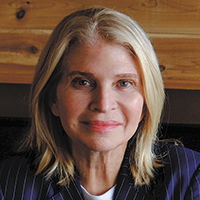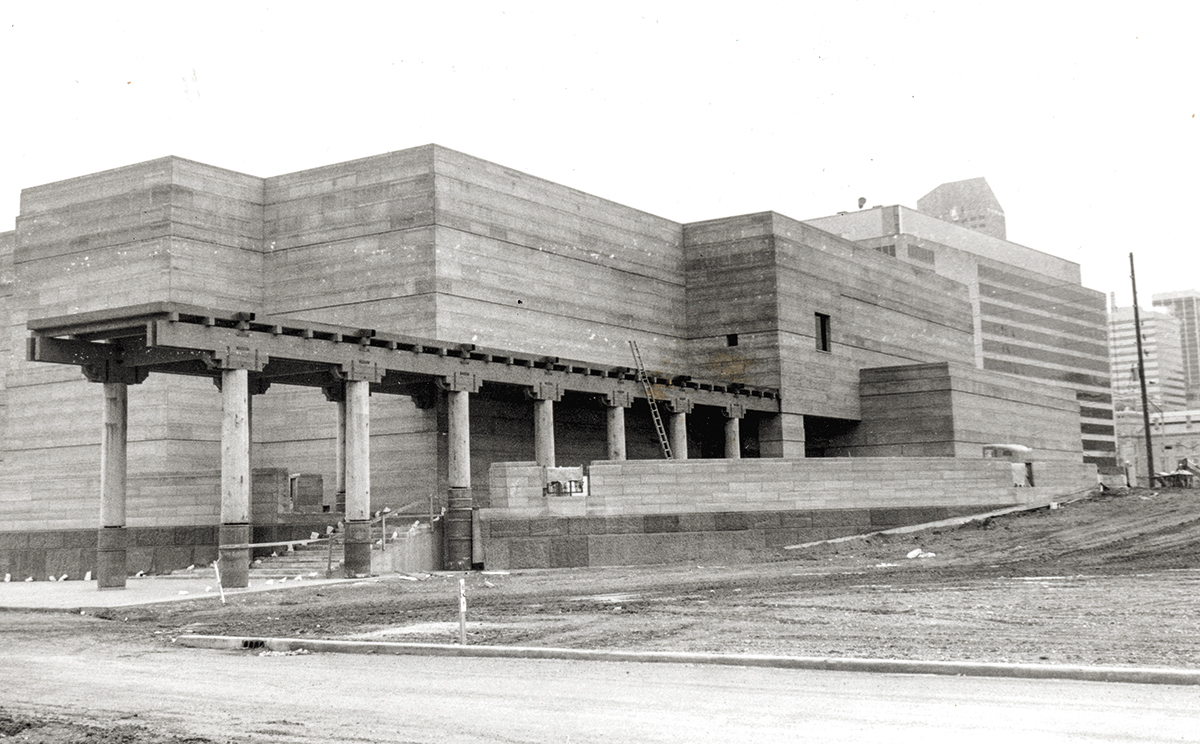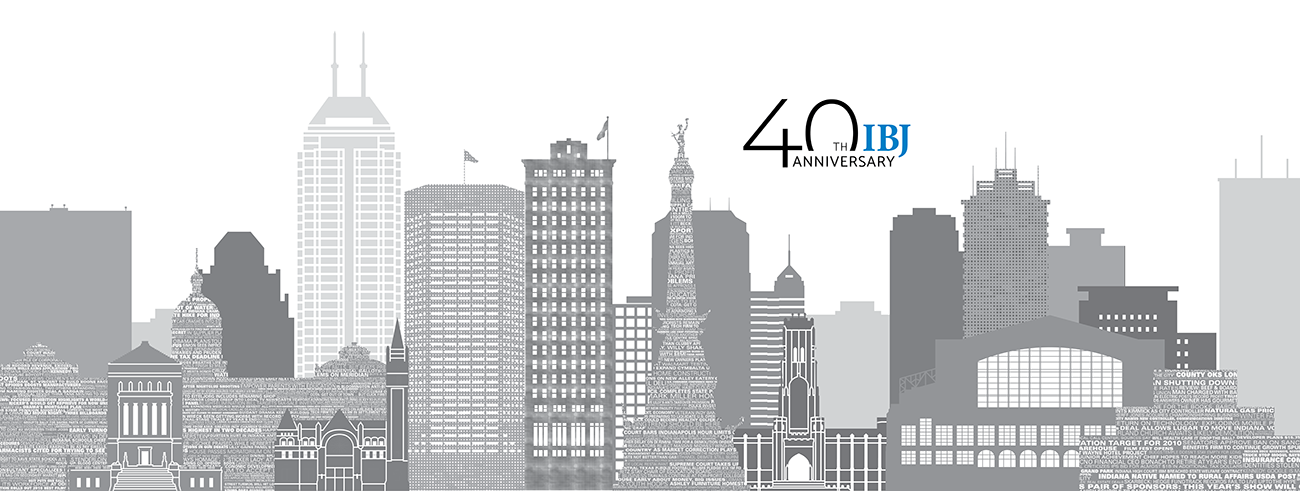40th anniversary: Indy’s cultural attractions grow, expand, flourish
Change is too small a word for what has happened on the dining and cultural scene in Indianapolis over the last 40 years. Anyone still throwing around the India-no-place moniker hasn’t been to the city in decades.
Dining
On the dining front, Indy went from chain city to—well, we still have lots of chains. But the region also has turned dining out into a cultural activity and local chefs into celebrities. And it hasn’t just happened in one area. Acclaimed eateries can be found on Massachusetts Avenue, in downtown Carmel, throughout the northwest side’s International Marketplace, and much more. Just a few highlights:
◗ The Patachou empire, launched in 1989, grew from one neighborhood eatery to a multibrand company and foundation.

◗ The Cunningham Restaurant Group (Mesh, Vida, et al.) opened its first neighborhood restaurant in 1997 and has since changed the culinary face of Mass Ave and beyond while expanding into Ohio and Kentucky.
◗ Staple steakhouse St. Elmo expanded its carnivorous footprint with Harry & Izzy’s, Burger Study and more.
◗ And Milktooth scored national attention when Jonathan Brooks was named one of the nation’s best new chefs in Food & Wine magazine.
Milktooth was also among the pioneers in the transformation of the Fletcher Place neighborhood along Virginia Avenue. Thanks to the development of the Indianapolis Cultural Trail and the work of pioneering developments and businesspeople, what was once an easy-to-ignore gap between downtown and Fountain Square has become a bustling destination.
Museums
Some trace the boom back to the Pan American Games in 1987, which not only helped Indy earn its amateur sports capital title but also gave a boost to the arts. The Indianapolis Museum of Art’s concurrent exhibition, “Art of the Fantastic: Latin America 1920–1987,” was the first large-scale presentation of 20th-century Latin American art in the United States in two decades.
The donation of 1,500 pieces of African and South Pacific art by the Eiteljorgs, the acquisition of the Samuel Josefowitz collection and the Clowes Collection gave additional boosts to the museum’s significance internationally. More would follow. The Oldfields-Lilly House and Gardens restoration, a $74 million museum expansion, and the development of the Virginia B. Fairbanks Art & Nature Park: 100 Acres were visible signs of growth while, inside, debate raged about the kind of institution the IMA would become. This reached a controversial head in 2017 when the decision was made to unify the entire campus under the name Newfields and replace the former free admission policy with a significant admission charge in an effort to turn visitors into members.
The Children’s Museum of Indianapolis had opened its new building in 1976. But in 1980, it entered the dinosaur world in a serious way with the display of its recently uncovered mastodon skeleton. Its iconic water clock and central stairway were added as part of an expansion in 1988-1990 that also included its planetarium. In 1999, Jeffrey Patchen took over as CEO and guided the museum through further expansions and renovations, including the creation of the InfoZone Library, the Power of Children exhibit, and the largely outdoor Riley Children’s Health Sports Legends Experience.

The creation of the White River State Park Development Commission in 1979 was an instrumental step in developing what is now a bustling string of attractions. The Indianapolis Zoo set up shop there in 1988 (with the expansion to include White River Gardens in 1999). The Eiteljorg Museum of American Indians and Western Art opened in 1989, then expanded and doubled its size in 2005. When the NCAA relocated its headquarters from Overland Park, Kansas, its new White River State Park digs included the NCAA Hall of Champions Museum. In 2002, the Indiana State Museum joined the lineup at the park, moving from across downtown and teaming up with the already up-and-running Imax Theatre. Not quite in the park but just across the street, the Indiana History Center opened in 1999, adding interactive exhibitions in 2010 in an effort to draw more visitors into its Indiana Experience.
Visual art
The sprawling, historic Stutz Building at 10th Street and Capitol Avenue was purchased by local real estate investor Turner Woodard in 1992. Used primarily for storage, the former car factory gradually became home to artists. In 2002, Woodard purchased another building in the complex to accommodate more tenants. The Faris Building, south of downtown, proved a similar studio hub before Eli Lilly and Co reclaimed it in 2002. And in 2000, philanthropist Jeremy Efroymson purchased Presbyterian Metropolitan Center, converting it into the Harrison Center for the Arts, which not only housed artist studios but also became a hub for First Friday activity.
First Friday was a program created by the Indianapolis Downtown Artists and Dealers Association, which formed in 2003 and dissolved in 2017, but not before having a strong influence on support for local visual artists. Smaller groups, including Big Car and Indy Convergence, have made concentrated efforts to bring arts to less-represented parts of the region, as did no-longer-with-us Primary Colours and Oranje.
Performing arts
Downtown culture got a major boost in 1984, when the Indianapolis Symphony Orchestra moved to the newly renovated Circle Theatre. Music Director John Nelson took the ISO to New York’s Carnegie Hall, Germany and the NPR airwaves as well as launching the summer season at Conner Prairie. His successor, Raymond Leppard, expanded the season to a full year. The 1980s also saw the launch of Yuletide Celebration, the ISO’s holiday concert that dominates the month of December. In 1996, thanks to an endowment infusion from Conseco founder Stephen Hilbert, its moniker was changed to Hilbert Circle Theatre. Meanwhile, in 1982, violinist Joshua Bell made his professional debut, at age 14, in the first Symphony on the Prairie concert.
The ISO wasn’t alone in providing top-notch music. The Indianapolis Chamber Orchestra made its debut in 1984 as Musicians of the Cloister. The long-standing Indianapolis Symphonic Choir commissioned and recorded new work. And the Indianapolis Children’s Choir grew from a choral festival in 1986 (another project sparked by the Pan Am Games) into a multi-choir world-traveling institution. And the Indianapolis Opera survived challenges that took it near the brink of closure to continue producing work large and small.
Combining a bit of sport with the performing arts, the International Violin Competition of Indianapolis has been a quadrennial staple since 1982. That same year, the National Piano Fellowship Auditions moved to Indy from New York, soon changing its name to the American Pianists Association and bringing alternate-year battles in classical and jazz. Both also now offer year-round programming. In 2009, the Great American Songbook Academy offered its first high school vocal competition, with winners earning national gigs. It has since become an annual event at Carmel’s Palladium.
The finals—and the week of workshops leading up to it, are an anchor for the Great American Songbook Foundation, housed at the three-venue Center for the Performing Arts, which includes the 1,600-seat Palladium. With guidance from high-profile performer/raconteur Michael Feinstein, its artistic director, the center presents national and international touring acts while also serving as home to local companies, including Actors Theatre of Indiana, the Carmel Symphony Orchestra, Booth Tarkington Civic Theatre and Gregory Hancock Dance Theatre.
Theater, dance
In the heart of downtown, the Indiana Repertory Theatre, the state’s largest regional theater company, moved from the Athenaeum to its present home, the Indiana Theatre building on West Washington Street, in 1980. The theater also has been home to Dance Kaleidoscope, which achieved new stature thanks in large part to the leadership of Artistic Director David Hochoy, a Martha Graham Dance Company soloist who took the DK reins in 1991.
Dance has had a challenging time here. While DK thrived and Gregory Hancock Dance Theatre grew, Indianapolis Ballet Theatre—later Ballet Internationale—hung up its toe shoes in 2005. Indianapolis City Ballet hoped to create a dance company but, instead, brought truly world-class dancers to Indianapolis for performances and workshops. Smaller groups have since formed, including Phoenix Rising Dance Company, resident dance company of the Phoenix Cultural Center. Others primarily focused on education and development.
Founded in 1983, The Phoenix Theatre earned a reputation as Indy’s home for off-Broadway work. The scrappy company spent most of its time just off Mass Ave before moving in 2018 to a new downtown building on Illinois Street. The move was nearly concurrent with a dramatic shakeup of management, leading to the exit of co-founder Brian Fonseca. He quickly launched Fonseca Theatre, dedicated to diversity and inclusion, on the near-west side. It joins a small number of Actors’ Equity Association theaters in the region, including Beef & Boards Dinner Theatre, Actors Theatre of Indiana and Indy Shakes (formerly Heartland Actors Repertory Theatre), presenting free professional summer productions in local parks.
Also in performing arts venues, the 500-seat Christel DeHaan Fine Arts Center was added to the University of Indianapolis campus in 1994 while, at Butler University, the Schrott Center for the Arts, a 475-seat concert venue, was added in 2013 to what became packaged as the Butler Arts Center.
There were setbacks, too. For nearly 50 years, Starlight Musicals (originally Stars Under the Stars) brought such national stars as Dick Van Dyke and Debbie Reynolds to perform with locals in summer productions. It closed and filed for bankruptcy in 1993. Edyvean Repertory Theatre ended a three-decade-plus run in 2002.
Mass Ave was the longtime home to Theatre on the Square, under the guidance of founder Ron Spencer. Spencer’s retirement in 2014 was followed by institutional instability that eventually led to a takeover. Now known as The District Theatre and functioning as a presenter rather than producer, it’s managed by IndyFringe, whose flagship theater and festival is also anchored on Mass Ave. The decline in arts coverage also has taken its toll, particularly with the print demise of Nuvo Newsweekly, once a key source for live music and other cultural coverage.
Live music
The live-music scene itself has ebbed and flowed as well. The breakup of Entertainment One, which ran the Vogue and the Patio (as well as Jake’s and the Bluebird in Bloomington), opened the door to more competition. In the aftermath came Fountain Square’s Radio and the HiFi. The oft-renamed Deer Creek Music Center (now Ruoff Mortgage Center) lured concertgoers to Noblesville, while the opening of the soon-to-be-expanded Lawn at White River State Park brought them back downtown. Market Square Arena, site of Elvis Presley’s final concert in 1977, was demolished in 2001, but Bankers Life Fieldhouse filled in the gap for downtown arena concerts. For local bands, the anchoring event of every year since 2002 has been Tonic Ball, with proceeds benefiting Second Helpings Inc.
One of the most successful transitions came with the transformation of The American Cabaret Theatre, a producer of musical revues at the Athenaeum, into The Cabaret, which brought national talent to a series of intimate venues before, in 2018, opening a swanky permanent home in its own venue on Pennsylvania Street. As an intimate spot for drinks, dining and music, it joins The Jazz Kitchen, which opened in 1994 and launched Indy Jazz Fest in 1999.
Film, literature
Cinematically speaking, the Heartland Film Festival and Indy Film Fest both launched, in 1992 and 2004, respectively, and thrived.
The highest-profile recent literary light has been young-adult author John Green, while the highest-visibility writers might be poet Mari Evans and novelist Kurt Vonnegut Jr., both now deceased and celebrated with multistory Mass Ave murals. The namesake museum and library celebrating the latter found a permanent home in 2019 across from the Madam Walker Legacy Center.
Very little of the above would have been possible without local arts philanthropists, including Jeremy Efroymson, Christel DeHaan, Frank and Katrina Basile, the Glick Family Foundation, the Indianapolis Foundation/Central Indiana Community Foundation, and Lilly Endowment Inc.
Also central has been the Arts Council of Indianapolis, which supports local arts organizations in a variety of ways. The council programs performances in the Artsgarden (which opened in 1995 as part of Circle Centre mall), runs Gallery 924, and administers the biannual Creative Renewal Arts Fellowship, which has awarded more than 450 $10,000 grants to central Indiana artists since 1999.•
Please enable JavaScript to view this content.

